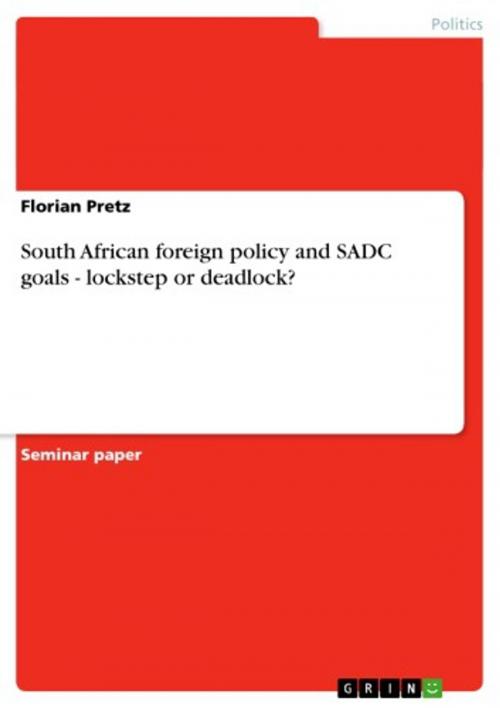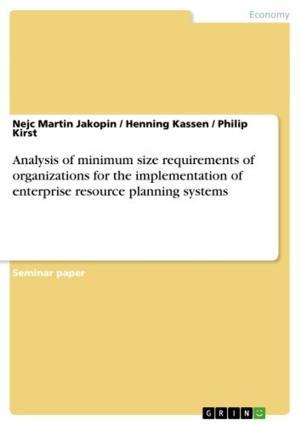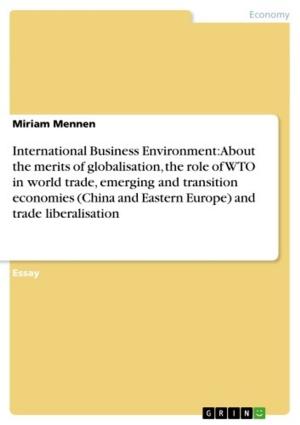South African foreign policy and SADC goals - lockstep or deadlock?
lockstep or deadlock
Nonfiction, Social & Cultural Studies, Political Science, International, International Relations| Author: | Florian Pretz | ISBN: | 9783640142217 |
| Publisher: | GRIN Publishing | Publication: | August 21, 2008 |
| Imprint: | GRIN Publishing | Language: | English |
| Author: | Florian Pretz |
| ISBN: | 9783640142217 |
| Publisher: | GRIN Publishing |
| Publication: | August 21, 2008 |
| Imprint: | GRIN Publishing |
| Language: | English |
Seminar paper from the year 2008 in the subject Politics - International Politics - Region: Africa, grade: 2,0, Nelson Mandela Metropolitan University (Faculty of Arts), course: Masters course: The political economy of regional integration in Southern Africa , 26 entries in the bibliography, language: English, abstract: The strongest state on the African continent - that is definitely South Africa. Their economic strength and international acceptance as a representative for the whole continent established that position. South Africa's international reputation as an emerging middle power (Erdmann 2007: 2) enabled the former Pariah-state to develop a unique foreign policy whose basic values are shared by most of the powerful states in the world. The importance of a flourishing African continent and economic as well as political success especially in Southern Africa was always emphasized by the representatives of the rainbow nation. According to this position, South Africa joined the South African Development Community (SADC) after its successful transition into a democracy in 1994, using this institution for cooperation with the neighbour-states. But 14 years after the termination of Apartheid questions regarding South Africa's foreign policy are raised: In how far plays the SADC a role in the plans of South Africa? Is SADC really, as often implicated, the top priority in South Africa's foreign policy? Does the vision of the institution and the expressed South African foreign policy go in the same direction? To answer these questions I will use an historical approach and start with an overview of the South African foreign policy since 1994. I will identify different phases, strongly linked to presidency, which will help to understand South Africa's current foreign policy. In chapter two I will focus on these current positions of the government and the national interests. The definition of the term national interest and its differentiation from foreign policy will take part in chapter two as well. Chapter three will focus on the SADC with its historical grown values and visions before a detailed analysis of the main question will be done in chapter four. By bringing the foreign policy on one side and the visions and goals of SADC on the other side together, a comparative analysis can be done. The assignment will conclude with an evaluation of the question if SADC and South Africa are still fitting together and if the mutual way will lead to a deadlock or a lockstep towards a prospering future for Southern Africa.
Seminar paper from the year 2008 in the subject Politics - International Politics - Region: Africa, grade: 2,0, Nelson Mandela Metropolitan University (Faculty of Arts), course: Masters course: The political economy of regional integration in Southern Africa , 26 entries in the bibliography, language: English, abstract: The strongest state on the African continent - that is definitely South Africa. Their economic strength and international acceptance as a representative for the whole continent established that position. South Africa's international reputation as an emerging middle power (Erdmann 2007: 2) enabled the former Pariah-state to develop a unique foreign policy whose basic values are shared by most of the powerful states in the world. The importance of a flourishing African continent and economic as well as political success especially in Southern Africa was always emphasized by the representatives of the rainbow nation. According to this position, South Africa joined the South African Development Community (SADC) after its successful transition into a democracy in 1994, using this institution for cooperation with the neighbour-states. But 14 years after the termination of Apartheid questions regarding South Africa's foreign policy are raised: In how far plays the SADC a role in the plans of South Africa? Is SADC really, as often implicated, the top priority in South Africa's foreign policy? Does the vision of the institution and the expressed South African foreign policy go in the same direction? To answer these questions I will use an historical approach and start with an overview of the South African foreign policy since 1994. I will identify different phases, strongly linked to presidency, which will help to understand South Africa's current foreign policy. In chapter two I will focus on these current positions of the government and the national interests. The definition of the term national interest and its differentiation from foreign policy will take part in chapter two as well. Chapter three will focus on the SADC with its historical grown values and visions before a detailed analysis of the main question will be done in chapter four. By bringing the foreign policy on one side and the visions and goals of SADC on the other side together, a comparative analysis can be done. The assignment will conclude with an evaluation of the question if SADC and South Africa are still fitting together and if the mutual way will lead to a deadlock or a lockstep towards a prospering future for Southern Africa.















